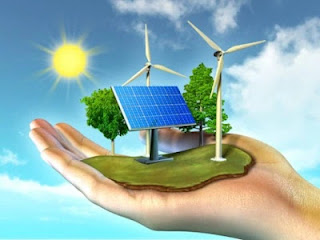Renewable Energy: Definition, Types, and Benefits
Renewable energy is an energy source that is available by nature and can be used continuously. This is in line with the statement of the International Energy Agency (IEA) which also states that renewable energy is energy that comes from natural processes that are continuously replenished.
The term renewable energy was born as a solution to the potential limitations of non-renewable energy sources that are widely used today. In addition, the research results also show that the prolonged use of non-renewable energy or also known as fossil energy has a negative impact.
Some of the negative impacts caused are triggered by the production of harmful gases from oxidation residues, such as CO2, SO2 and NO2. The CO2 gas produced is one of the greenhouse gases that triggers global warming. Whereas SO2 and NO2 are compounds that are sources of acid deposition which will return to the earth's surface with acid rain or as free particles.
The impacts of acid deposition include disturbing the balance of soil nutrients, damaging water quality, extinction of several types of living things that cannot adapt to acidic conditions, causing health problems in humans, and many more.
Starting from these thoughts and facts, scientists in all parts of the world including Indonesia are trying to come up with new innovations as solutions to these various problems. Then, come to efforts to utilize renewable energy.
5 Types of Renewable Energy
Image: ayoguruberbagi.kemdikbud.go.id
There have been quite a number of examples of renewable energy that have been found so far, including the following:
1. Solar energy
Solar energy is energy that comes from sunlight. In addition to helping plants carry out photosynthesis, it turns out that sunlight also has a function that is no less important for human life, namely as an alternative for electricity generation. The role of solar energy as a power plant has been developed massively by various countries such as Germany, the United States, India and Japan.
To convert solar energy into electrical energy, a solar panel is needed which functions as an intermediary that absorbs sunlight, then converts it into electrical energy. Next, the electricity flows to the inverter which has the role of converting DC current into AC current before it can then be used to turn on various equipment that uses electricity as an energy source. See this video: How does Solar panels work?
Also read: How solar panels work and why they are important
2. Water energy
The use of water as an energy source has been known for a long time. Of course, the abundant amount would be very unfortunate if it was only used to irrigate agricultural land, recreation areas, and for consumption.
The process of converting water energy is quite easy, namely by making a waterwheel which is then placed in a watershed that has a strong current. The goal is that the greater the energy produced. The waterwheel rotation generates kinetic energy which is then used to rotate the generator. Well, that's where the electrical energy is generated. \Watch the following video: Hydroelectric power - how it work.
Also read: Water as Renewable Energy Source
3. Wind energy
Wind is air moving from areas with high air pressure to areas with low air pressure. With these properties, it is very possible if the wind is also used as an energy source. The principle of utilization is the same as water energy, namely by making windmills. Then, the rotation of the windmill is continued to rotate the generator which produces electrical energy. Maybe you are interested to see this video.
4. Geothermal energy
Geothermal is heat energy that comes from within the earth. In general, areas that have geothermal potential are areas that are in the area traversed by the Pacific ring of fire, such as the Philippines, Indonesia and New Zealand.
To utilize geothermal energy, it is usually done by digging to a certain depth that reaches geothermal points. Then the heat energy is channeled to drive the turbine. The turbine movement is then used to rotate the generator. Maybe you are interested to see this video: How does a Thermal power plan work.
5. Bio-energy
Bio-energy is an energy source that comes from living things and organic materials, such as wood, grass, animal manure, agricultural waste and household waste or what is known as biomass. To utilize these materials as an energy source, some can be done directly and some must go through a series of processes.
Organic materials that do not need to go through a series of certain processes such as wood. Meanwhile, animal manure, household waste, and agricultural waste usually go through a series of certain processes to produce energy sources. The end product is biodiesel, bioethanol, biogas, bioavtur, and others.
The presence of various types of renewable energy can certainly be a breath of fresh air for human life. In addition to slowly leaving non-renewable energy, it also reduces the negative impact of using non-renewable energy. Maybe you are interested to see this video: How does Biomass Work?
Benefits of Renewable Energy
- Using renewable energy is certainly more environmentally friendly because it can reduce air pollution and environmental damage due to exploration.
- Costs incurred to produce energy tend to be cheaper because the energy source is available for free. In addition, the cost of maintenance or maintenance required is also cheaper because the equipment used can be said to be quite simple.
- Optimizing the use of renewable energy encourages people who are energy independent, because they no longer need to depend on supplies or stocks of non-renewable energy supplies, which are predominantly imported.
- It does not require special centralization of production because it can be produced anywhere.
- Encouraging economic growth significantly because the creation of an energy independent society will of course also have an impact on increasing public spending in other sectors.
Source: infopmb.itpln.ac.id

Post a Comment for "Renewable Energy: Definition, Types, and Benefits"